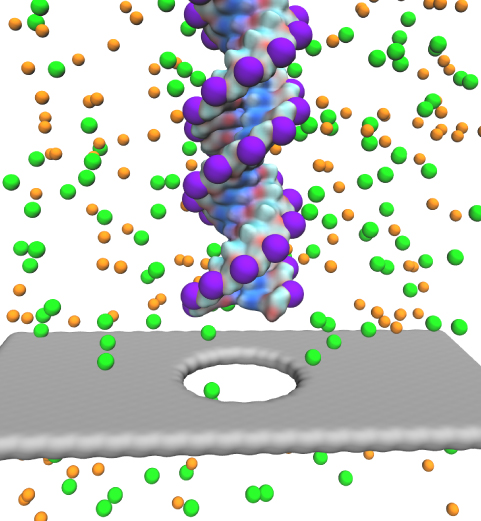Highlights of our Work
2025 | 2024 | 2023 | 2022 | 2021 | 2020 | 2019 | 2018 | 2017 | 2016 | 2015 | 2014 | 2013 | 2012 | 2011 | 2010 | 2009 | 2008 | 2007 | 2006 | 2005 | 2004 | 2003 | 2002 | 2001

image size:
210.7KB
made with VMD
Characterizing the genetic makeup of individuals can help select the best
treatment for individuals, but requires that sequencing of the whole DNA of
patients can be achieved for less than $1000. Fortunately, recent discoveries in physics
promise help. Indeed, the discovery of the thinnest material known to
mankind, graphene, promises a new and cheaper way to sequence human DNA. As reported
in the December
2011 highlight, graphene pores can conduct electrophoretically
DNA through very small pores, so-called nanopores. A new study
has demonstrated that graphene, forming a single atomic layer thin stripe with
a nanopore in the middle, can conduct an electrical
current, the sheet current, around the pore. The sheet current is sensitive to
the DNA passing through the pore and may even sense the passing DNA's
sequence. In this case monitoring the current can establish a DNA sequence
reader. The sensitivity of the sheet current depends critically on
an orderly passage of DNA. Optimal sensitivity can arise when the passing DNA
is stretched mechanically. Molecular dynamics simulations using NAMD suggest conditions
for mechanically manipulating DNA for optimal sequence analysis.
More on our graphene
nanopore website.



